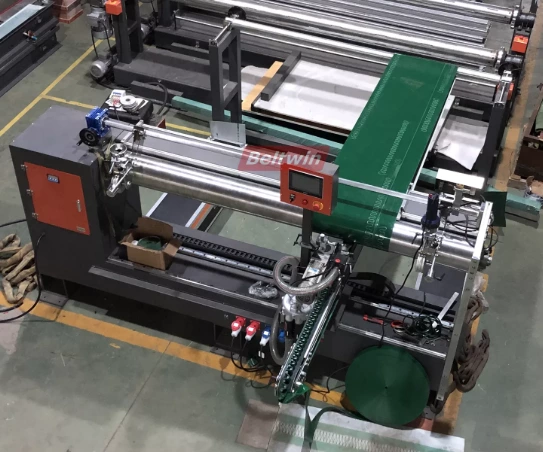Analysis and Maintenance Strategies for Common Conveyor Belt Issues
Despite regular inspections, conveyor belt systems remain susceptible to operational challenges that can escalate into costly repairs and downtime if unaddressed. Proactive identification and resolution of these issues are critical for maintaining system longevity and efficiency.
Idler/Roller Seizure Prevention
Non-rotating idlers/rollers caused by material buildup or mechanical failure generate excessive friction, accelerating belt wear and increasing fire risks in combustible environments. Critical safeguards include routine inspections and immediate replacement of compromised rollers.
Belt Tracking Deviation
Misalignment occurs when belts deviate from their intended path, typically caused by uneven loading, skewed idlers, or damaged rollers. Remedial actions include realigning conveyor components, optimizing material distribution, and implementing self-tracking mechanisms to maintain proper belt positioning.
Material Spillage Management
Bulk material discharge at transfer points or belt edges commonly stems from misalignment, overloading, or inefficient transfer design. Countermeasures involve installing skirt sealing systems and impact cradles. Additionally, welding side skirts along belt edges – particularly at transfer zones – proves highly effective for material containment (especially for PVC/PU belts). Equipment like the Beltwin QB2000S/S3000S Sidewall & Guide Welding Machine ensures reliable installation through its hot-air adhesive melting process, enabling precise welding of side skirts and V-guides on PVC/PU endless belts up to 3,000mm wide × 10mm thick – an essential solution for plastic belt mass production.
Debris Accumulation Control
Material residue and environmental contaminants accumulating on belts, rollers, and pulleys necessitate systematic management. Preventive protocols include scheduled cleaning cycles combined with belt scrapers and advanced sealing systems to minimize buildup and maintain operational smoothness.
Conveyor Belt Slippage
Loss of traction between belts and drive pulleys significantly reduces operational efficiency. Primary triggers include inadequate tension, worn pulley surfaces, or belt contamination. Mitigation requires regular tension calibration, pulley condition assessments, and application of high-friction lagging on drive pulleys.
Progressive Wear Mitigation
Abrasive materials and heavy loads inevitably cause structural degradation (cracks, cuts, surface erosion), compromising belt integrity. Extending service life requires:
- Selection of abrasion-resistant materials
- Scheduled integrity inspections
- Preventive maintenance planning
- Documentation of wear patterns
Conclusion
Implementing these targeted maintenance strategies ensures safer, more efficient conveyor operations with minimized disruptions. Proactive intervention remains fundamental to sustainable material handling performance.
 Русский
Русский Deutsch
Deutsch Français
Français Español
Español Português
Português